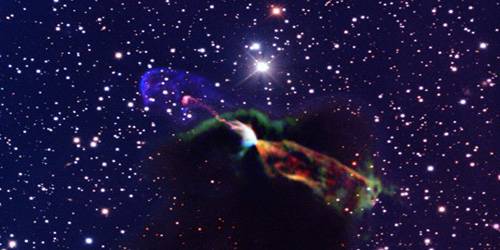The distribution of matter and energy was not even in the early universe. These primary density differences gave rise to differences in gravitational forces and it caused the matter to get drawn together. These formed the bases for the expansion of galaxies. A galaxy contains a large number of stars. Galaxies spread over vast distances that are measured in thousands of light-years. The diameters of individual galaxies range from 80,000-150,000 light-years. A galaxy starts to form by the accumulation of hydrogen gas in the form of a very large cloud called a nebula. Eventually, the growing nebula develops localized clumps of gas. These clumps continue to grow into even denser gaseous bodies, giving rise to the formation of stars. The formation of stars is believed to have taken place some 5-6 billion years ago.
A light-year is a measure of distance and not of time. Light travels at a speed of 300.000 km/second. Considering this, the distances the light will travel in one year is taken to be one light year. This equals to 9.461×102 km. The mean distance between the sun and the earth is 149.598.000 km. In terms of light-years, it is 8.311 minutes a year.

Star Formation
Stars are made up of a relatively dense concentration of interstellar gas and dust known as clouds. The formation of stars is the process by which dense regions within the molecular clouds of interstellar space are sometimes identified as “starter nurseries” or “star-forming regions”, fall and form. Important clues about our genesis are hidden behind dust screens and often impressions of very beautiful star-forming molecular clouds. Our Earth and the solar system were born 4.6 billion years ago and we have very little knowledge of what happened. A supergiant star like Antares, a bright original sequence star like Regal, or a more humble star like Sirius cannot stand as long as the sun can. These stars were of course comparatively formed. Suddenly the light created by the new starbursts away and the nearby gas cloud moves away, but it may later leave enough material to form several planets.
A galaxy contains billions of gases and dust, not billions of stars. These regions of the galaxy’s gas and dust are interspersed with stars. Although there is no need to lie at the geometric center of the cloud, only from dense regions are they referred to as the core of the cloud. Larger cores (which probably contain subcondensation) up to a few light-years in size give rise to clusters of very large stars (known as their most prominent members, descriptive type, and descriptive OB attachments at the B level) or uninterrupted clusters. However, the telescope has contributed to large discoveries about star formation in the far reaches of the universe. This is important because distant galaxies are seen much earlier in time because their light needed a great distance to reach us. The core of a normal cloud rotates fairly slowly and its mass is concentrated strongly towards the center of the distribution. The rate of slow rotation is probably due to the braking action of the magnetic fields and is responsible for the thread in its envelope. The proposal involves the slipping of a neutral element of lightly ionized gas in accordance with the self-gravitational action of the matter to pass suspended particles in a background magnetic field. This slow slippery molecular cloud will provide theoretical explanations for the low overall efficiency of observing star formation.
Detailed calculations show that a protostar appears very well above the original sequence in the first Herzsprung-Russell diagram because it is too bright for its color. As it continues the contract it moves downwards and to the left in the original order. Most of them do not form isolated but are known as star clusters or star associations as a part of the stars.















